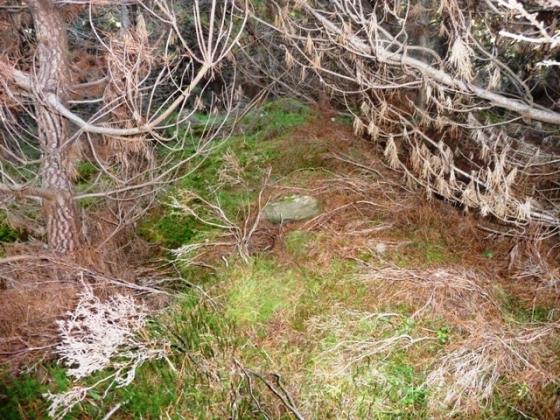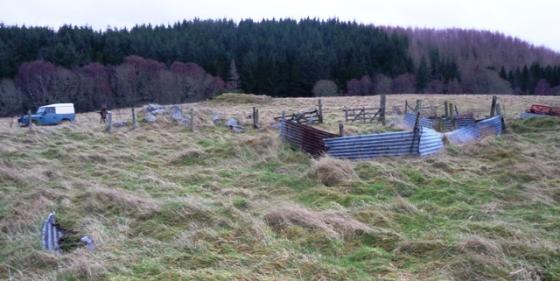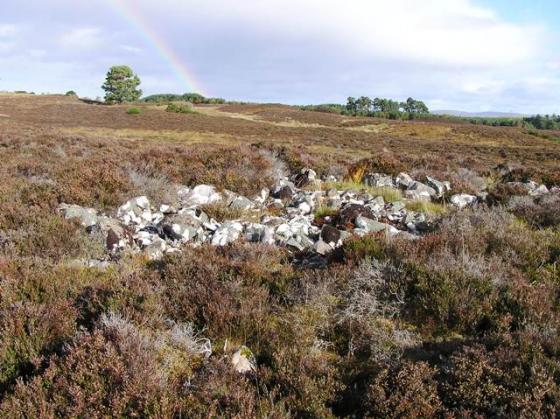... Craigshowe cave was at length reached. Some recent visitors assured us that the cave had no end, and that they had been told that it took a turn and came out at Loch Lundy on the other side of the hill.
Going in as far as we could without stooping, the rock dipped downward, and there seemed nothing but black darkness beyond; and over us came a creepy feeling lest we should be disturbing some sleeping goblin or fairy within its depths. However, doubling ourselves until our heads and knees almost met, a few yards’ crawling enabled us to pass the turn and stand once more, while behind us was the light trying to pierce the gloom. A matchbox proved a handy companion, but, do what we could, the matches would not burn, but flickered and died out almost immediately, and even the attempts to obtain light by igniting the matchbox failed, so damp was the atmosphere. We managed, however, to see that we were at the end of the cave, and that the water was trickling very slowly from the rocky ceiling.
Returning to the beach, we inspected the well at the mouth of the cave, into which the water is said to fall at the rate of one drop a minute. This well is also stated to possess virtues which are said to have been proved by visitors who suffer from deafness, and instances are given where the observance of the rites have resulted in an absolute relief to the victims of this most trying complaint. One must visit the well at midnight; and, having secured a mussel shell, hold it to the drop until it has been filled, thereafter pouring it into the ear, and – well, faith does the rest.
A few paces from the cave there stands the Wishing Tree, a very flourishing and luxuriant rose tree bristling with thorns. Each visitor to this shrine of hope and fear, if desirous of obtaining some good or ill omen, ties a rag upon one of its branches, and the wish is said to be thereupon granted. It is indeed a curious sight to see the many coloured ribbons fluttering in the breeze, some of them having maybe stood the storm and sunshine more bravely than has done the faint heart that fluttered like a frightened bird as the trembling hands tied firmly to the thorny tree the little bit of gay ribbon that a minute before may have adorned the hair of a fair vision, and who may have come there to charm away the evil spirits, because -’My fause lover pa’d the rose; And, ah, he’s left the thorn wi’ me.‘
Then, if it is felt that the tree has not yielded the desired fruit, there remaineth the wishing well, just behind, in a recess of the rock, into which one must drop a penny in order to tempt the fairies to give the donors what they sigh for. Someone must reap the benefit of this simple faith, as the clear depths of the well did not show that even the latest copper had been allowed to rust in fairyland.
Then beside the well there is a large stone, on which are distinctly marked red spots, which are said to be the indelible traces of the blood of a child that was cruelly murdered by its mother.
From ‘Highland Superstitions (From a Correspondent)’ in the Aberdeen Press and Journal, 12th September 1895.

























































































































































